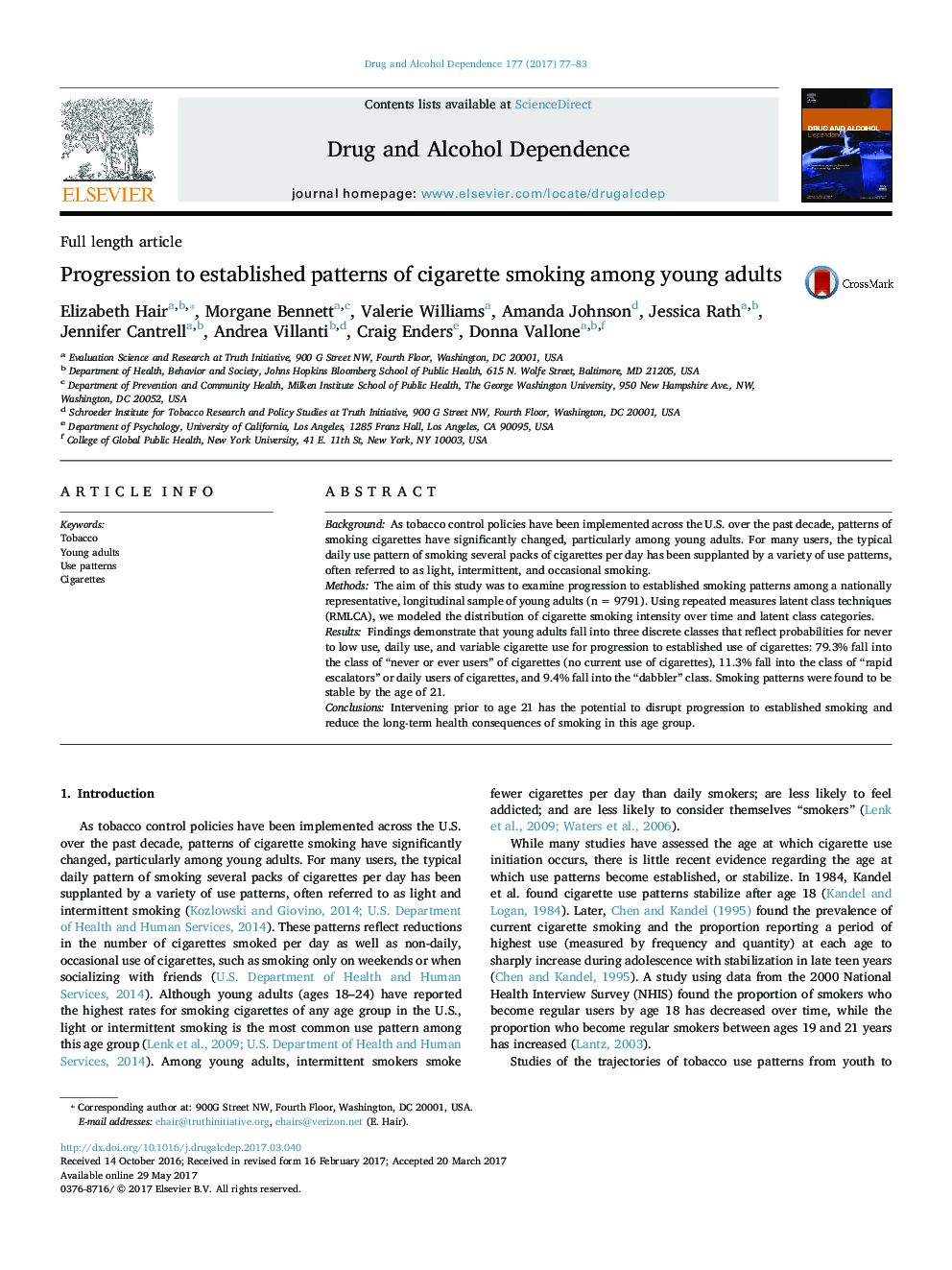| کد مقاله | کد نشریه | سال انتشار | مقاله انگلیسی | نسخه تمام متن |
|---|---|---|---|---|
| 5120027 | 1486114 | 2017 | 7 صفحه PDF | دانلود رایگان |
- The aim was to examine progression to established cigarette smoking patterns.
- Limited recent evidence exists on the age at which use patterns become established.
- Three discrete classes of cigarette use patterns were identified in this study.
- Results suggest established patterns of cigarette use occur by age 20-22.
- Risk for progression to established use appears to continue into young adulthood.
BackgroundAs tobacco control policies have been implemented across the U.S. over the past decade, patterns of smoking cigarettes have significantly changed, particularly among young adults. For many users, the typical daily use pattern of smoking several packs of cigarettes per day has been supplanted by a variety of use patterns, often referred to as light, intermittent, and occasional smoking.MethodsThe aim of this study was to examine progression to established smoking patterns among a nationally representative, longitudinal sample of young adults (n = 9791). Using repeated measures latent class techniques (RMLCA), we modeled the distribution of cigarette smoking intensity over time and latent class categories.ResultsFindings demonstrate that young adults fall into three discrete classes that reflect probabilities for never to low use, daily use, and variable cigarette use for progression to established use of cigarettes: 79.3% fall into the class of “never or ever users” of cigarettes (no current use of cigarettes), 11.3% fall into the class of “rapid escalators” or daily users of cigarettes, and 9.4% fall into the “dabbler” class. Smoking patterns were found to be stable by the age of 21.ConclusionsIntervening prior to age 21 has the potential to disrupt progression to established smoking and reduce the long-term health consequences of smoking in this age group.
Journal: Drug and Alcohol Dependence - Volume 177, 1 August 2017, Pages 77-83
